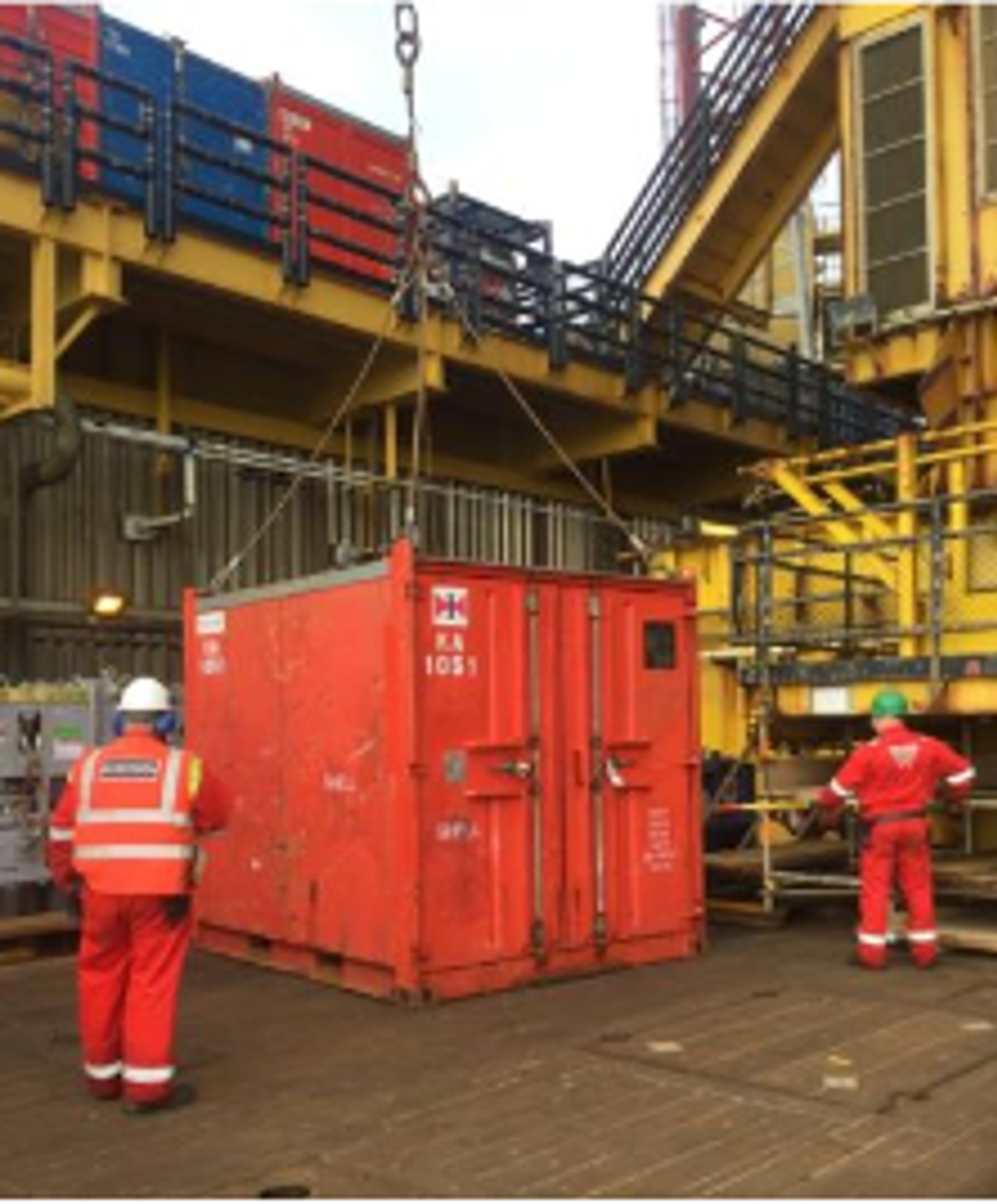LTI: Finger injury while using ‘safe hands’ tool
- Safety Flash
- Published on 23 January 2018
- Generated on 27 December 2025
- IMCA SF 02/18
- 2 minute read
Jump to:
Step Change in Safety reports an incident in which a crewman sustained a finger injury while using a ‘safe hands’ tool to manoeuvre a container into place.
What happened?
Crew were working to move load handling containers onto the skid deck using a ‘safe hands’ tool (blind lift).
A container was landed onto the skid deck. As it was being manoeuvred into position against the back skid rail, the container moved to the right. The crewman moved towards the side of the container and during this process his hand (which was placed at the back end of the ‘safe hands’ tool) came into contact with a scaffold rack. His finger was nipped between the scaffolding rack and the butt of the ‘safe hands’ tool, resulting in the loss of the tip of one of his fingers.
Operations were stopped and the load made safe. A time out for safety was held with the deck crew to review practices and the risk assessment.

What went wrong? What were the causes?
- Although all personnel on the job were competent and experienced in conducting the task, the focus and attention of the injured person was on moving the container and not on his immediate surrounding.
- The gap between the container and the scaffolding rack was not identified as a hazard before starting the job.
- The load handler’s hand was at the back of the ‘safe hands’ tool and out of his view and focus.
IMCA publishes a wide range of safety promotional material including:
- Line of fire (pocket card and short video, and longer video)
Related Safety Flashes
-
IMCA SF 28/16
18 October 2016
IMCA Safety Flashes summarise key safety matters and incidents, allowing lessons to be more easily learnt for the benefit of the entire offshore industry.
The effectiveness of the IMCA Safety Flash system depends on the industry sharing information and so avoiding repeat incidents. Incidents are classified according to IOGP's Life Saving Rules.
All information is anonymised or sanitised, as appropriate, and warnings for graphic content included where possible.
IMCA makes every effort to ensure both the accuracy and reliability of the information shared, but is not be liable for any guidance and/or recommendation and/or statement herein contained.
The information contained in this document does not fulfil or replace any individual's or Member's legal, regulatory or other duties or obligations in respect of their operations. Individuals and Members remain solely responsible for the safe, lawful and proper conduct of their operations.
Share your safety incidents with IMCA online. Sign-up to receive Safety Flashes straight to your email.